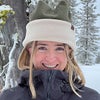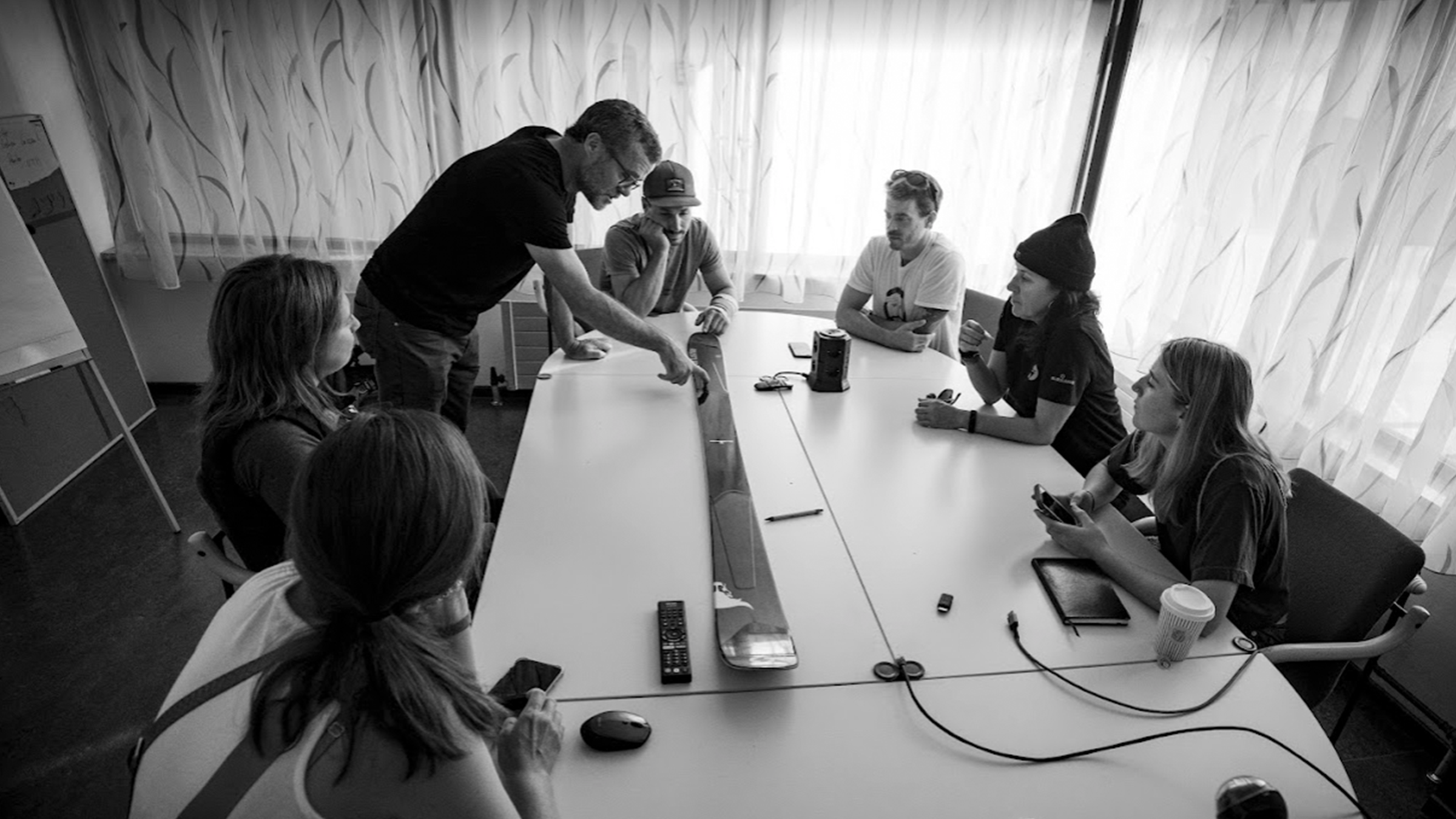If you’ve glanced at our annual Winter Gear Guide before, then you know the name . If you’ve leafed through our all-mountain and powder ski reviews, you know Blizzard’s legendary Rustler and Sheeva freeride line. Just this last year, all three Sheeva and Rustler models made the ten-best skis list in our digital gear guide. So why then, you might ask, did Blizzard decide to this year? We had the same question. This fall, I flew to Blizzard’s factory in Austria to find out.
Behind the Brand
I arrived on the train from Salzburg to Kitzbühel in mid-October, where I met a few members of Blizzard’s marketing team and two other journalists. We caravanned through the countryside of the Austrian Alps until we turned a bend at the top of a peak and found the quaint village of Mittersill nestled in the middle of the valley. The majority of Mittersill’s 5,464 occupants work on the mountainous, near vertical farms that surround the village, or in the tourist shops and cafes in town. But around 300 of these people commute every morning to one of the largest buildings in the village, the Blizzard ski factory—also known as the Tecnica Group Ski Competence Center.

Built in 1946, the factory produces around 230,000 skis per year, including skis for a few other brands. Inside the factory, fast-moving workers greeted us with warm and busy smiles as they moved efficiently around massive metal machinery. There were the people in charge of molding the skis, who oriented each layer of material just so that the machine pressed them down at an extreme force to meld them together. There were the ski finishers—one of whom was working the band saw to remove excess raw material from the ski after it had been molded. He grinned and waved at us with one hand while his other hand moved at the speed of light, fingers inches away from an absurdly sharp blade. There was the woman whose sole duty it seemed was to carefully watch one conveyer belt, simply to make sure each ski received Blizzard’s “Live the Moment” motto stamped onto the sidewall.

Then there’s the man who presides over them all: Blizzard’s head of product development, Stefan Moser. Austrian and soft-spoken, I had to tilt my ear about a foot away from Moser’s face to hear him above the roar of the machinery. Once I did though, I realized his quiet nature belied his expertise.
Moser, an expert skier himself, is the one who takes testing feedback from Blizzard athletes like Marcus Caston and Cate Zeliff, makes sense of it all, and translates that into actual physical changes in ski design. Moser, Blizzard’s product team, and Blizzard athletes in collaboration played the central role in the redesign of the Sheeva and Rustler collections.
2023–24 Blizzard Rustler/Sheeva Tech and Changes
Ever since the Rustler launched in 2017 and the Sheeva in 2014, the skis have dominated the freeride marketplace—winning rave reviews and awards in �����ԹϺ���’s and Ski’s gear tests as well as from professional athletes and consumers. Last year, I wrote that though our testers felt the Sheeva 10 hammered “on the hardpack due to its responsiveness and energy, they were equally impressed by its off-piste abilities.” Simply put: they’re excellent skis.
But throughout the years, Blizzard athletes and testers noted one small but consistent shortcoming in these skis’ performance: their flex profiles. “It was the hinge points in the tips and the tails that would break down in certain conditions,” said Caston as we took a lap up the Kitzsteinhorn glacier. “Like if you were on a groomer, it was initiating or finishing the turn, and in powder, the [Rustler] 11 would push up.”
After some tinkering, Moser and his team pinpointed the cause of this hinge point: it started with the DRT (Dynamic Release Technology) plate inside the ski. The DRT plate is essentially a layer of titanal in the binding area of the ski, which is supposed to add stability underfoot while allowing the tips and tails to remain soft and playful. While the DRT plate accomplished just that, its position underfoot created issues when skiers attempted to smoothly transition energy from the center of the ski to the tips and tails.
To combat this, Blizzard added its FluxForm technology to the new Rustlers and Sheevas, which allows the frame of the ski to reach all the way from the tail to the tip. In this tech, two pieces of titanal run all the way down either edge, while a third solid platform of titanal remains underfoot. The idea is that the platform underfoot will help provide stability, while the gap in the middle of the ski towards the tip and tail will keep it playful and soft. The Sheevas and the Rustlers have slightly different FluxForm patterns per model (for example, the 9 models have more titanal than the 10’s and 11’s.)
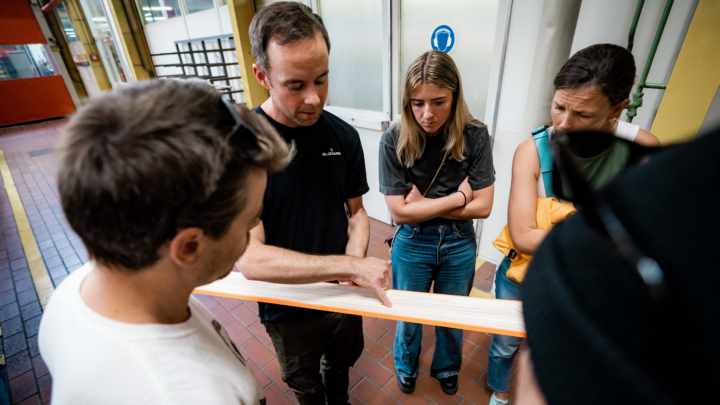
To create a more consistent feel within the ski, Blizzard also applied its Trueblend Freeride Woodcore technology. The technology behind Trueblend is in the name: three different types of wood (paulownia, poplar, and beech) are blended together at different lengths within the 9, 10, and 11 skis, which creates a more precise flex profile in each model. Again, the result is a ski that’s softer in the tips and tails and harder in the center while maintaining a medium flex in front of and behind the bindings. Past iterations of the ski also achieved this to a certain extent, but the Trueblend helps to create a more seamless transition.
From the outset of this redesign, the goal was never to entirely scrap the old Rustler or Sheeva construction. The Blizzard team recognized that they already had a good thing going; they just realized they had an opportunity to make a great thing even better.
“We didn’t change the goal—we didn’t change the idea of the ski—we created a better way of getting there.”
“The idea of our technology in the first [Rustler-Sheeva] theoretically was the right theory. We didn’t want to change the theory on what we were trying to do, we wanted to improve on how the tech was reaching that goal,” said Blizzard’s animated North American director of marketing, Frank Shine. “FluxForm is the next step in achieving that same goal. We didn’t change the goal—we didn’t change the idea of the ski—we created a better way of getting there.”

But if there’s one aspect of the brand I took away from the trip, it’s just how athlete-driven Blizzard is. Caston, like other Blizzard athletes, has been intimately involved in the 2023 Rustler and Sheeva redesigns (Blizzard’s athlete-driven research and design approach to ski development is partly why Caston has stayed with the brand for so long). From touring the factory to testing the skis on the glacier to recapping our response to skis over Witbier at the end of the day, Caston was always part of the conversation.
“[Blizzard] knows how I ski. When I talk with Stefan he knows like okay—he skis like a racer at the front of the boot, whereas the other guys are more playful, so the feedback they get is different,” said Caston. “That was the success that Blizzard had to begin with—their skis weren’t just for experts or beginners—anybody could use those skis. They were easy to ski, but they didn’t have a speed limit. So that’s kind of like the Rustlers now.”
First Review: 2023–23 Blizzard Sheeva
I first tested the new Sheeva and Rustler skis at Austria’s Kitzsteinhorn glacier, one of the main resorts closest to Mittersill. After a thirty-minute drive and three separate gondola rides, the Blizzard team and I arrived at a tow rope at the top of the glacier, which took us up to the only two runs open at this time of year in October. Europe had experienced a warmer-than-average summer and fall, and as a result, we encountered spring-like conditions, even on this year-round glacier at 10,509 feet. Variable conditions like these don’t usually inspire confidence, especially not when it’s your first run of the season. But the new Sheeva 9, 10, and 11 handled the mix of ice and slush with ease.
The first thing I noticed about the new Sheeva 9 was how much more intuitive it felt compared to the previous iteration. The ski turned smoothly through a mix of icy and slushy moguls—while the older versions felt more hooky and less forgiving. In a way, this made the ski feel more energetic because it was easier to turn. When I attempted to chase Caston and Anne Wangler, a German Blizzard athlete, down the last variable run of the day, I didn’t notice a speed limit. The ski felt more stable than before, but the responsiveness that the previous Sheeva is known for is still there.

There’s no denying that the Sheeva is still a rather stiff ski (metal, which adds torsional rigidity, will do that), but after a few runs, it felt like an approachable ski that wanted to move with me. It was excited to go where I wanted to lead, as long as I stayed relatively on top of it.
I got on the 10 and 11 for a few runs as well and was surprised at how easy to ski it felt in the conditions (the 11 is 112 millimeters underfoot, and the 10 is 102). The 11 held its own in the choppy snow, and I got a couple of good carving turns in there, although it didn’t want to stay on edge on the hardpack quite as long as the 9 and 10.
After I flew back to the U.S., I got back on the new Sheevas about a month later in Vail, where Ski hosted its annual Ski Summit to meet with brands about their upcoming products. Vail had just received around 10 inches of snow in the days before, so we had those perfect, soft groomers that the resort is known for. We didn’t get to test the skis as much off-piste, but the general consensus seemed to be the same: the new Sheevas are as versatile and lively as ever, but more stable and intuitive than before.
It’s hard to change a product that’s been consistently doing well. And yes, it will take more testing and more skiers to decide if the change was worth it. After all, we all know that if it ain’t broke, don’t fix it. But should good sales and good reviews halt progress? Ultimately, Blizzard answered that question with a sound “no” in its revamping of the Sheeva and Rustler collections. Maybe the old collections weren’t broken, but what also isn’t broken is Blizzard’s strategy to listen to its athletes, and to continue its innovation.
2023–23 Blizzard Sheeva Specifications
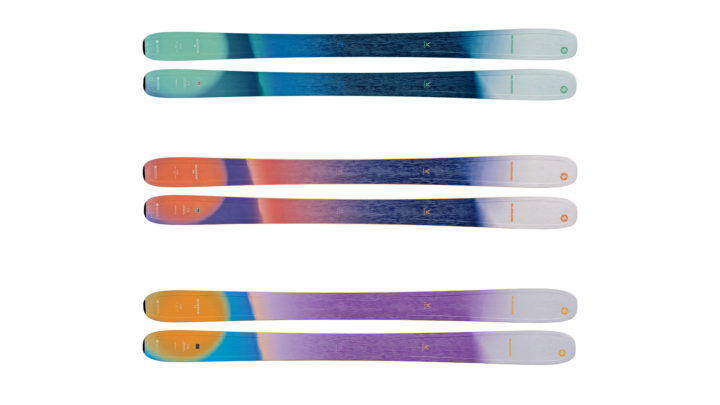
Blizzard Sheeva 9
- Lengths: 152-156-162-168-174 centimeters
- Sidecut: 129-96-118,5 millimeters (174)
- Radius: 12; 13; 14; 15; 16 meters
Blizzard Sheeva 10
- Lengths: 156-162-168-174-180 centimeters
- Sidecut: 133,5-102-122,5 millimeters (174)
- Radius: 13,5; 14,5; 15,5; 16,5; 17,5 meters
Blizzard Sheeva 11
- Lengths: 168-174-180 centimeters
- Sidecut: 140-112-130 millimeters (174)
- Radius: 16; 17,5; 19 meters
2023-’23 Blizzard Rustler Specifications
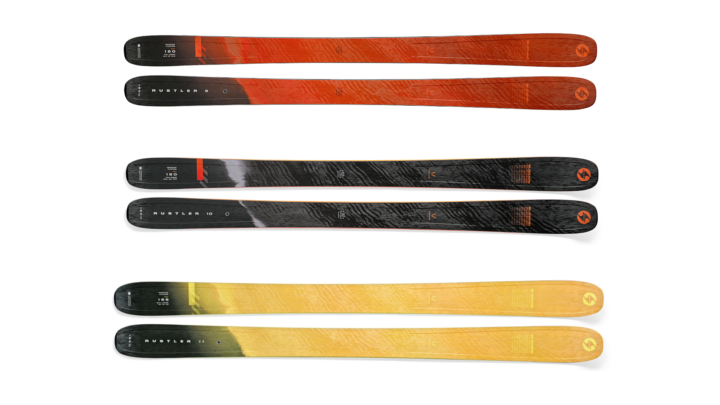
Blizzard Rustler 9
- Lengths: 162-168-174-180-186 centimeters
- Sidecut: 131,5-96-121 millimeters (180)
- Radius: 14; 15; 16; 17; 18 meters
Blizzard Rustler 10
- Lengths: 162-168-174-180-186-192 centimeters
- Sidecut: 134-102-123 millimeters (180)
- Radius: 14,5; 15,5; 16,5; 17,5; 18,5; 19,5 meters
Blizzard Rustler 11
- Lengths: 168-174-180-186-192 centimeters
- Sidecut: 142-114-132 millimeters (186)
- Radius: 16; 17,5; 19; 20,5; 22 meters
More 2023 Gear Reviews

